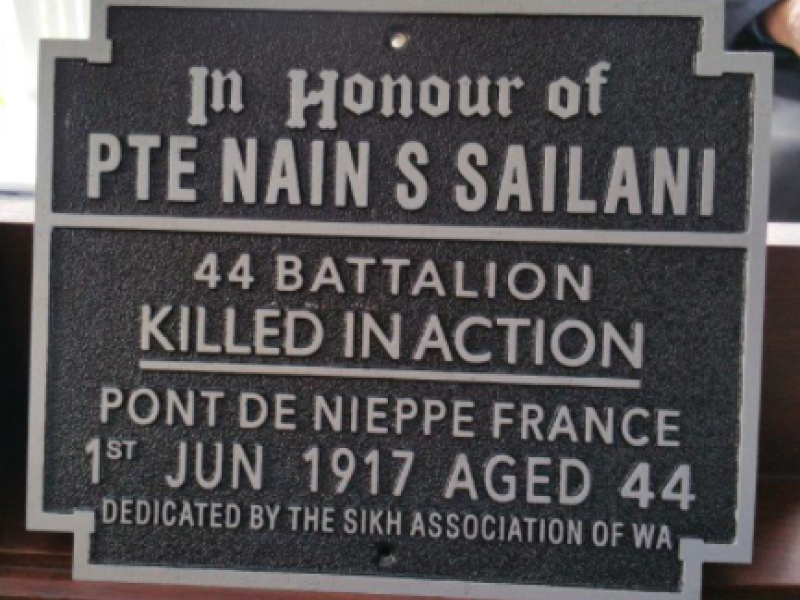Pte Nain Singh Sailani, 44th Battalion, AIF
At least 12 Indian Australians are known to have enlisted in the Australian Imperial Force (AIF) during the First World War. Two of them, Pte Sarn Singh and Pte Nain Singh Sailani were the only known casualties, both dying in the line of duty in the battle of Messines, in June 1917.
The Australian Defence Act of 1909 stated that those “not substantially of European origin or descent” were not eligible to enlist. Despite this, more than 400,000 people of Asian, Mediterranean, Aboriginal, Torres Strait and Indian descent voluntarily enlisted in the AIF.
Australians came into regular contact with Indian troops from British forces throughout the First World War, fighting in close proximity to them on Gallipoli and in the Middle East. Indian troops of any unit were highly thought of by the Australians. In 1915, Private Charlie Beherendt said: “I have been fighting side by side with Kitchener’s army, and the Sikhs and Gurkhas. The Indians fight like tigers and are a great unit to the Empire.”
Private Nain Singh Sailani was born in Shimla, India. He emigrated to Perth in 1895, aged 22 and worked as a labourer.
Sailani worked in Western Australia as a labourer, and used the Perth General Post Office to receive his mail. He was friends with Mr Cyril Coleman, a tobacconist in Perth, whom Sailani nominated as the executor of his will.
In February 1916, he enlisted in the AIF, aged 43. He embarked on the troopship, Suevic, joining the 44th Battalion on the Western Front in November.
In May 1917, the 44th was in France, holding the front line or in working parties in or near the front line. Working parties could be particularly dangerous, as they had to work under enemy fire while either repairing or constructing trenches, or carrying ammunition and supplies to the front.
In late May and early June 1917 the battalion was involved in working parties for more than a week in the area around Ploegsteert Wood. On 1 June 1917 the whole Australian front line and reserve area came under heavy German artillery and machine gun fire. Somewhere in this fire, Nain Singh Sailani was killed in action.
There are no records of the manner of his death, nor was his mother, Ranjore Singh, sent any details in Simla. However, he was clearly a fit and remarkable man. He arrived in France during one of the harshest winters on record, and yet there is no record of him visiting hospital for any reason, unlike the many stricken by influenza or pneumonia.
Nain Singh Sailani was buried as an Australian solider in the Strand Military Cemetery in Ploegsteert Wood, Belgium.
In 2017, 100 years after his death, Private Nain Singh Sailani was commemorated in a ceremony at Perth's War Memorial in Kings Park.
Meghan Adams, Military History Section
- Australian War Memorial https://www.awm.gov.au/articles/blog/remembering-sikhs

 Australian War Memorial
Australian War Memorial